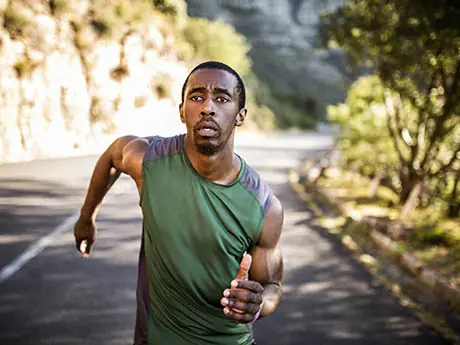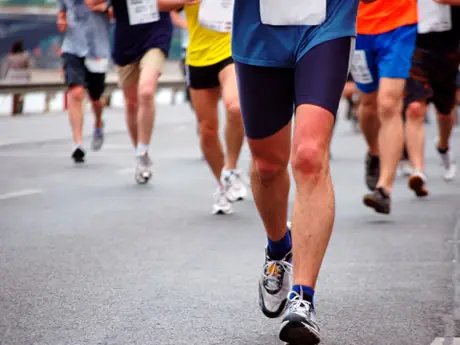
Humidity can affect running performance and your training if you're unprepared. Understanding how it impacts your workouts will help you train smarter and keep you from overheating or dehydrating in the summer months.
When it's hot
When your body temperature rises during exercise, your body sweats and the evaporation of water off the skin works to cool the body, as does the body sending blood to the skin.
The body also demands oxygen in the muscles during exercise, so blood is diverted to the muscles, causing less blood to flow to the skin. This is when you overheat.
The body can also send less blood to your muscles and more to your skin to try to cool; but in turn, your heart rate spikes as you work harder.
What happens when it's humid
The risk of overheating or heat exhaustion is higher during humid workouts because the body is working harder to cool off in the saturated air.
Relative humidity is the amount of water in the air, and when those levels are high, the body struggles to stay cool. The more humid it is, the more water there is in the air, and thus the evaporation of sweat is more difficult. In this case, sweat stays on your skin, signaling the lack of evaporation and cooling.
When the apparent temperature is between 90-105 degrees, runners can face heat exhaustion or heat cramps. Before heading out for your summer workouts, check humidity levels to find out how the apparent temperature is affected.
How humidity affects performance
Your running pace is affected as the temperature rises. At 60 degrees, running pace is influenced by a 2- to 3-percent increase, so an average 8-minute mile pace jumps to 8:12 per mile. At 80 degrees, the effect is between 12 to 15 percent, so that mile pace becomes about 9:06.
In humidity levels between 60 to 90 percent, your heart rate can increase up to 10 beats per minute. This means your 8-minute pace might feel like a 6-minute pace because the heart is pumping harder and more quickly.
How to adjust to high humidity
It takes around two weeks of consistent training in humidity to adapt to a warmer, more humid environment; and staying hydrated is key. Aim for 4 to 8 ounces of a sports drink or water every 15 to 20 minutes while training in humidity. You can also weigh yourself before and after running: For every pound lost during working out, drink 16 ounces of fluid.
Eventually, your running efficiency will be improved as your body learns to better dissipate heat and learns to control its core temperature. The body will cool better and even your sweat will contain less salt, so you lose fewer electrolytes: all so you can train your body and face autumn with faster times.
About the Author
Amanda Casanova
Get ACTIVE on the Go


Couch to 5K®
The best way to get new runners off the couch and across the finish line of their first 5K.
Available for iOS | Android







Discuss This Article